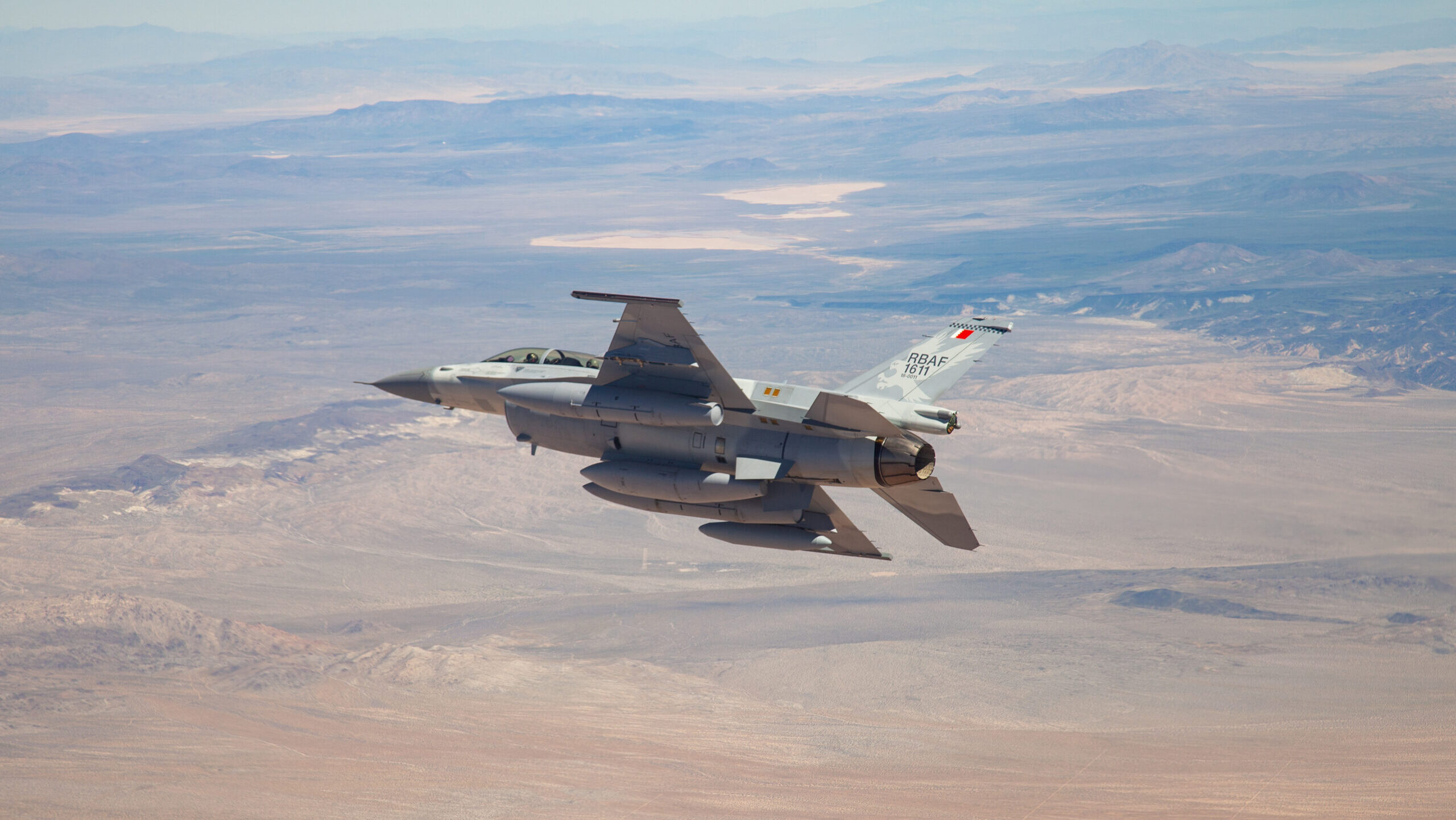
The first Royal Bahraini Air Force F-16 Block 70 flies above Southern California before landing at Edwards Air Force Base, California. (US Air Force)
DUBAI AIRSHOW — A new electronic warfare (EW) suite developed by L3Harris for F-16 fighter jets is set to clear an upcoming developmental milestone in December, paving the way for the system to eventually head to production in the fourth quarter of 2025, according to an L3Harris official.
The EW system, known as Viper Shield, is planned to go on Lockheed Martin-made block 70/72 F-16s for customers of foreign military sales. In an interview with Breaking Defense at the Dubai Airshow, Anna Gragossian, who leads L3Harris businesses development for international electronic warfare, said Viper Shield’s next program milestone, known as its third “drop,” will demonstrate an initial radar warning receiver (RWR) capability using production-representative hardware. (RWR refers to when a system detects radar activity of a potential adversary, helping pilots to either evade or fight a threat.)
As an EW system, it “identifies the threats, gives you self-protection and allows you to jam the signals” of adversaries, Gragossian explained, adding that the system has demonstrated the ability to fend off “current threats” in a US Air Force study.L3Harris says Viper Shield was developed in partnership with the US Air Force and Lockheed.
The hardware in the upcoming December drop is planned to closely mirror what eventually goes in production units, and will be further matured in flight tests early next year, a company spokesman said. The spokesman said that five nations will receive the system with new block 70/72 jets they’ve ordered, but he did not identify them. Another L3Harris official reportedly said they are Bahrain, Bulgaria, Morocco, Slovakia and Taiwan.
RELATED: 180 minutes to kill: Can the Air Force update EW within 3 hours of detecting a new threat?
L3Harris is aiming to lower lifecycle costs by using off-the-shelf hardware, and is employing smaller systems to help reduce tradeoffs posed by size, weight and required power, Gragossian said. She added that Viper Shield was developed with open systems architecture, which should help deliver upgrades like new software releases more smoothly.
However, she demurred when asked about discussions of data rights and military-led sustainment for hardware and software of the system, stating that it’s too early in the program to discuss those details.
“Whatever the US government’s decision is, we always work with them to find a way of supporting them and their partner nations,” she said.
Gragossian said L3Harris is “looking at” offering Viper Shield technology for other platforms like fighters, as well as leveraging it for related efforts. With growing interest in drone warfare — and a stated goal by the Air Force that its uncrewed wingmen effort known as Collaborative Combat Aircaft (CCA) will carry electronic attack systems — she pointed to the company’s Disruptor offering that can be mounted on drones as one example of how the company is adapting EW tech to different systems.
The Air Force has indicated electronic attack weapons could come later in CCA development, which Gragossian noted is “the case with everything.” According to her, there was about a two-year gap between the start of the new aircraft contract and when Viper Shield’s own contract was signed, which the company’s spokesman said was inked in 2020. L3Harris has since met every milestone set from the beginning on time, Gragossian said, though she noted that EW capabilities sometimes aren’t prioritized in development.
“I guess it’s not the priority for their platforms. And I wish that it was different,” she said.






















